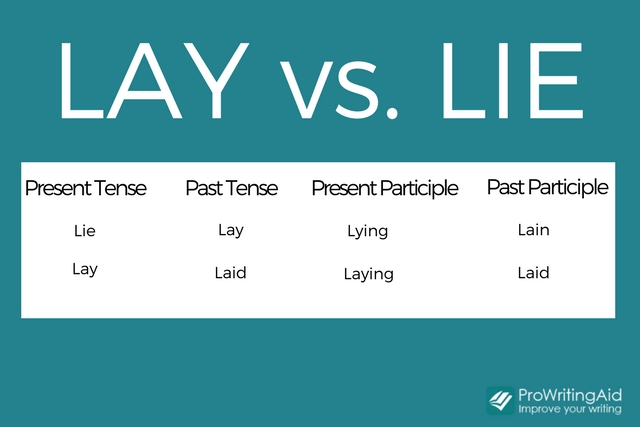
Lay and lie can trip up the most seasoned writer. Let's do a quick and dirty here so it finally makes sense.
First, let's exclude the meaning of "lie: to tell a fib."
We will only focus on the two meanings, one meaning for "lay," setting something that requires a direct object after it, and "lie" meaning the subject has reclined on something.
Present tense
We'll start with the easiest tense. When you're talking about doing something right now, you:
- "Lay the book on your nightstand."
or
- "Lie on the chaise lounge and work on your tan."
So how can you remember the difference? See if this makes sense:
People must lay something down, while they lie down by themselves.
Past tense
This is much harder. Why? Because now "lay" is the past tense of "lie." Yep.
So here's what you have to remember:
Lay is the past tense of "lie."
Laid is the past tense of "lay."
This is where most people go wrong. Here are the correct ways to use these in sentences:
She lay on the bare mattress and shivered.
I laid the car keys on the table and walked out of the door.
Now for the monkey wrench.
Present participle
The spelling becomes a nightmare. Here's what you need to remember:
Lie: John loves to spend Saturday mornings lying on his couch binge-watching Netflix.
Lay: Stop laying your dirty socks on the back of the toilet.
Past participle
This is even harder. Take a look at past participles.
Lie: Marianne had lain on the same mattress for weeks now.
Lay: I have laid the damaging evidence on the headmaster's desk.
What to do now
I wish there was a cute saying I could give you to help you remember. Instead, put this nifty table up on the wall above your desk or tape it to your monitor:

If you want to be considered the consummate professional you are, spend the time to get these right from the start. You'll impress the heck out your editor and your readers.

